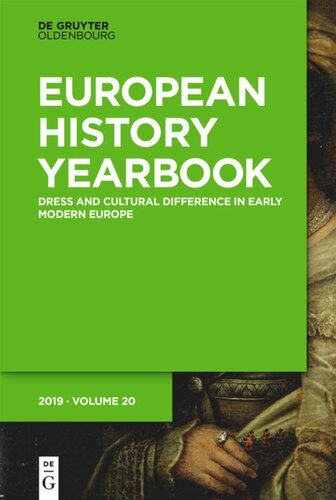

Most ebook files are in PDF format, so you can easily read them using various software such as Foxit Reader or directly on the Google Chrome browser.
Some ebook files are released by publishers in other formats such as .awz, .mobi, .epub, .fb2, etc. You may need to install specific software to read these formats on mobile/PC, such as Calibre.
Please read the tutorial at this link: https://ebookbell.com/faq
We offer FREE conversion to the popular formats you request; however, this may take some time. Therefore, right after payment, please email us, and we will try to provide the service as quickly as possible.
For some exceptional file formats or broken links (if any), please refrain from opening any disputes. Instead, email us first, and we will try to assist within a maximum of 6 hours.
EbookBell Team

4.0
16 reviewsDress is a key marker of difference. It is closely attached to the body, part of the daily routine, and an unavoidable means of communication. The clothes people wear tell stories about their allegiances and identities but also about their exclusion and stigmatization. They allow for the display of wealth and can mercilessly display poverty and indigence. Clothes also enable people to play with identities and affinities: for instance, individuals can claim higher social status via their clothes. In many ways, dress is thus open to manipulation by the wearer and misinterpretation by the observer.
Authorities—whether religious or secular, local or regional—have always aimed at imposing order on this potential muddle. This is particularly true for the early modern era, when the world became ever more complex. In Europe, the composition of societies diversified with the emergence of new social groups and increasing migration and travel. Thanks to intensified long-distance trade and technological developments, new fashionable clothes and accessories entered the market. With the emergence of a consumer culture, it was now the case that not only the extremely wealthy could afford at least the occasional indulgence in luxury items and accessories.
Over recent years, research has focused on a variety of areas related to dress and appearance in the context of early-modern political, socio-economic, and cultural transformations both within Europe and related to its entanglement with other parts of the world. Nevertheless, a significant compartmentalization in the research on dress and appearance remains: research is often organized around particular cities and territories, and much research is still framed by modern national boundaries. This special issue looks at dress and its perception in Europe from a transcultural perspective and highlights the many differences that clothing can express.